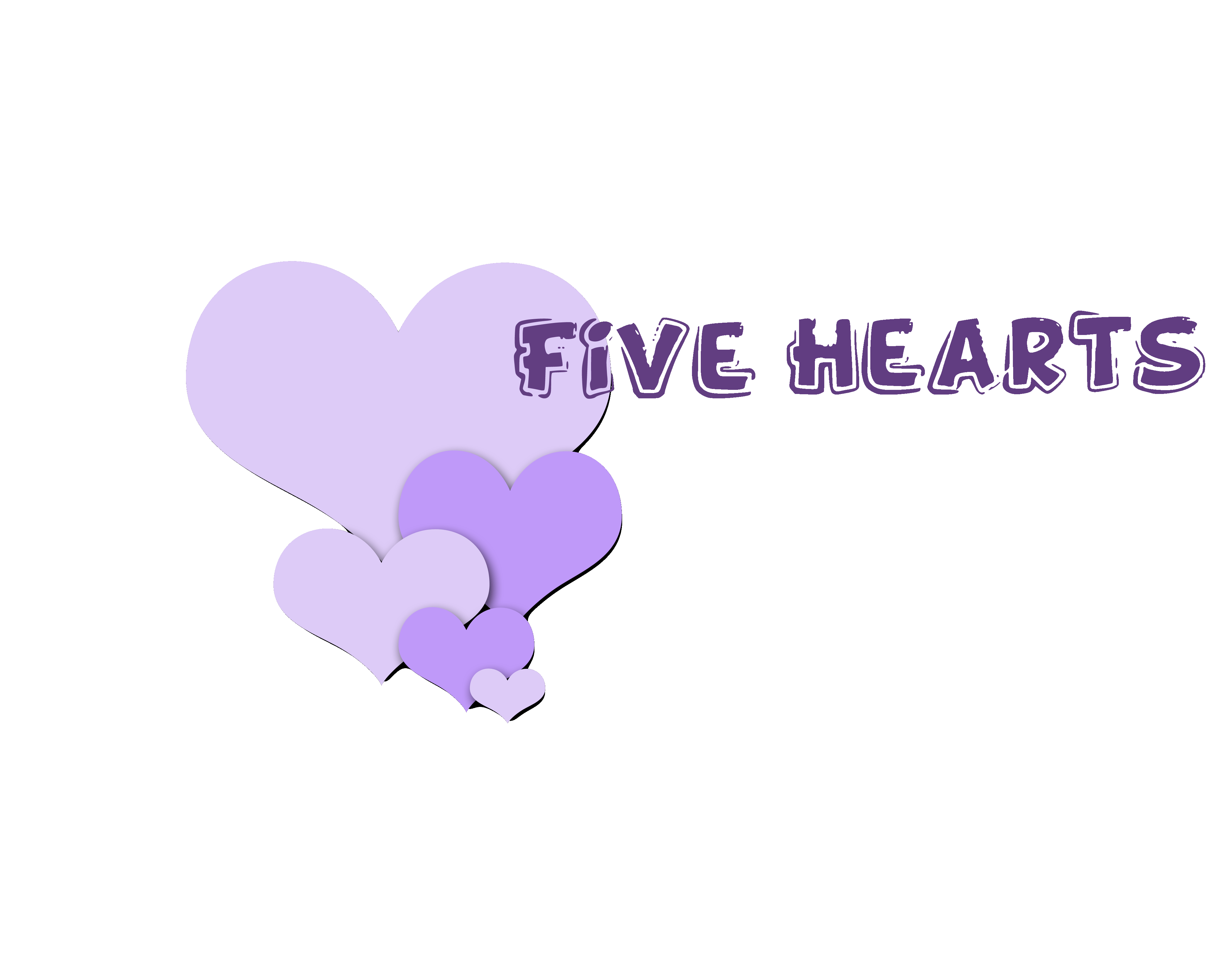About Five Hearts Preschool
Five Hearts Preschool in South Reno is proudly owned and operated by Ms. Sandi and Ms. Emily

Ms. Sandi earned her Bachelor's degree in California and her teaching credential at Sierra Nevada College. She has lived in South Reno for 42 years. After raising her 4 children, Ms. Sandi taught kindergarten through third grade with washoe county school district. Ms. Sandi has a strong background in Music and Dance and implements these skills in her curriculum. As a member of the Nevada Registry Ms. Sandi continues to partake in Early Childhood Professional Development courses throughout the year.

Ms. Emily has lived in reno all of her life. she received her bachelor's degree from unr in environmental science. She has been teaching at a local reggio inspired preschool for the last seven years. Along with her work with AmeriCorps, she has worked for Kids Kottage and volunteered for Big Brothers
Big sisters. Ms. Emily embraces outdoor education and will use our one acre property as an outdoor classroom along with our magical indoor classroom.
Morning and
afternoon classes
6 to 1
Child - Teacher
Ratio
Qualified Teachers
What makes our South Reno Preschool unique?
Our ratio of six children to one teacher makes our preschool unique. At Five Hearts Preschool
we focus on the development of natural cognitive processes in early childhood. We emphasize
the individual interests of the child so they are able to grow according to their own developmental stage, with our guidance.
Opened in 2014, Five Hearts Preschool is located in a beautiful space attached to our home on one acre in South Reno. The school and fenced play area are a rich learning environment with goats, chickens and a year round creek, A wonderful outdoor environment for three to five year old children. With my experience as a certified teacher for 25 years, music and dance teacher, home day care, mother of four grown children and six grandchildren, I feel privileged to be able to share this experience with families in our south Reno neighborhood.
The small size of classes at the preschool will ensure a safe, secure, family like experience as your child progresses through the program and prepares for kindergarten. Our mature property with Whites Creek and our live animals offers ample opportunities for exploration outside the immediate preschool area.
Our belief is that children be allowed to splash in the puddles, dance in the wind, walk in the rain, build snowmen, run through the sprinklers, jump in the leaves and smell the flowers as they learn through their five senses. Our curriculum provides for hands on experience guided by the Emilio Reggio Approach as well as other early childhood education philosophies.
-Ms. Sandi
Components of Optimal Quality Child Care or Preschool
There is a significant correlation between program quality (safe, stimulating environment) and socialization outcomes for children. In our program we strive to emphasize children as individuals, and to provide a quality setting for their natural gains in cognitive, social, emotional and physical growth.
The most significant predictors of positive classroom dynamics and child outcomes are:
-
The size of the overall group
-
The teacher-child ratios
-
Whether the teacher has specialized training in child development or early childhood education
In classrooms that have smaller groups and whose teachers have specialized training, teachers can engage in more social interaction with the children. As a result, the children are more cooperative, more involved in tasks, more talkative, and more creative. They also make greater gains in cognitive development.
It is important to practice developmental appropriateness in a preschool setting. Developmental Appropriateness involves the knowledge of children’s normal growth patterns and individual differences. Developmental Appropriate Practice (developed by the National Association for the Education of Young Children) views play as the primary indicator of children’s development. It ensures that each child is viewed as a unique person with an individual pattern and timing of growth, as well as individual temperament, learning style, and family background. Both the program and the interactions should be responsive to individual differences.
Berns, Roberta M. "Ecology of Nonparental Child Care." Child, Family, School,
Community: Socialization and Support. 9th ed. Bemont: Wadsworth, Cengage Learning, 2013. 157-59. Print.
A Secure Environment for the Development of School Readiness
What is school readiness? Most would agree that school readiness is having basic knowledge such as colors, ABC’s and number recognition. Susan D. Calkins and Amanda P. Williford, in the Handbook of Child Development and Early Education, describe school readiness as the “skills observable at school entry that are necessary for later school success” (Calkins and Williford, 2009, pg. 174). They state that these observable skills should include early social and emotional competence.
Kindergarten teachers report that the mastery of basic skills, such as
working independently, understanding and following classroom rules
and routines, and sharing and taking turns, is more important than
the mastery of academic skills for future school readiness
(Calkins and Williford, 2009, pg. 174).
Some researchers would stress that the development of self is one of the key components of school readiness. Development of self includes self-awareness, self-regulation, social and emotional understanding, empathy and caring, and initiative in learning.
Self-Awareness
A preschooler’s self-awareness is initially based on simple, observable, external and physical attributes, such as “I have red hair”, “I can jump high”. As the preschooler gets older, they exhibit a more sophisticated level of self-awareness that includes internal attributes and psychological characteristics, such as “I am nice”, “My mommy loves me”. Social comparison, such as “Tommy is smaller than me”, or “Sally runs faster than me”, is another indicator of self-awareness.
A young child is sensitive to the comments and evaluations of adults, particularly the parent. As they mature they will incorporate these evaluations into their self-awareness. For example, a child whom is told he “cannot do” something, or he “does not know” something can be incredibly detrimental to the child’s self-awareness. Instead parents and teachers need to encourage their children to try new things and comfort them if they fail, letting them know it is ok and they can try again later.
Self-Regulation
Self-regulation is the ability to suppress a dominant response and to perform instead a subdominant response. For instance, a child who is sitting still on the carpet during circle time while the teacher is working through the calendar or reading a story is displaying good self-regulation. Self-regulation is relevant to a variety of essential capabilities in classroom learning. In fact several studies have shown that self-regulatory abilities are predictive of children’s math and reading achievement in the early elementary school years (Alexander, Entwisle and Dauber, 1993, pg. 151). Coaching children to look away from a forbidden treat or to use words rather than hitting when angry are a few examples of how we can promote self-regulation.
Social and Emotional Understanding
Social and emotional understanding is the ability to understand other’s feelings and emotions. “Young children who are more competent in understanding other’s feelings have been found to become more academically competent in elementary school, perhaps because of their more successful peer an adult relationships” (Izard, 2002, pg. 152). When a child tries to explain or describe others feelings, this provides a perfect opportunity for teachers to discuss the children’s feelings and causes of feelings. Teachers and parents can also help children to understand why their peers feel and respond the way they do.
Empathy and Caring
Empathy is a person’s emotional response to another person’s distress. Caring concerns a person’s efforts to help the person in distress. Young children often do not know how to respond to a peer that is in distress. A toddler’s lack of response to another person’s distress is not something to be concerned with. As children become school aged their capacity for empathetic and caring responses increases. A sense of empathy and the ability to care for another person leads to greater social competence and to a child who is more actively engaged in the well being of his or her classmates, teachers and school environment. Teachers and parents can promote growth in this domain by allowing children to be involved in comforting and providing care for other people.
Initiative in Learning
“Learning Orientation” is characterized as the act of learning for the sake of learning. “Performance Orientation” is characterized as the act of learning to achieve something, such as parents or teachers approval. Going into kindergarten, we want our children to be learning oriented. A learning oriented child is more likely to tackle difficult challenges and to persist even if early efforts are unsuccessful. Therefore, a strong learning orientation can predict future classroom achievement. Teachers and parents who emphasize children’s efforts and intrinsic abilities help contribute to the development of a learning oriented child. Strong efforts should be valued even if it results in initial failure. Children need encouragement to persist in their efforts to solve difficult learning challenges.




